This site contains affiliate links to products, and we may receive a commission for purchases made through these links.
How do virtual reality headsets work? This fascinating question has captured the imagination of gamers, explorers, and those eager to learn about cutting-edge technology.
In this blog post, we’ll examine the technology behind virtual reality systems and provide a thorough overview of how they work.
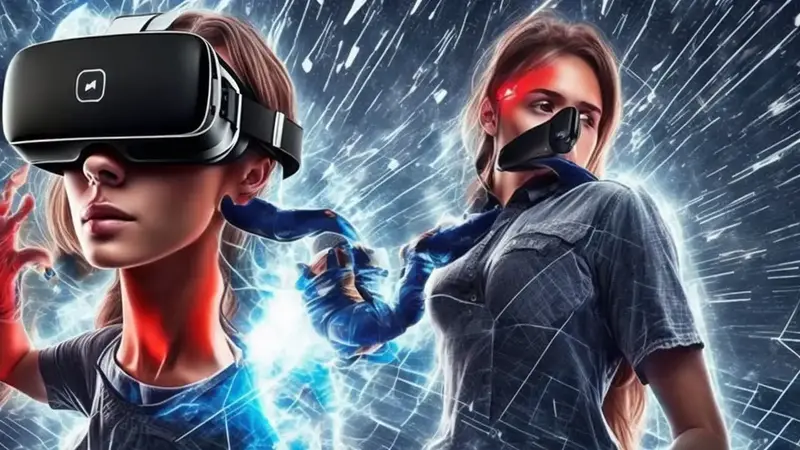
Key Takeaways:
- Virtual reality (VR) is a computer-generated, three-dimensional universe experienced through special electronic devices like headsets or gloves fitted with sensors.
- VR has gained popularity among gamers, explorers, and learners.
- The concept of VR dates back to the 1960s, and advancements in technology have made it more accessible and user-friendly over time.
- There are three main types of VR systems: non-immersive simulations, semi-immersive simulations, and fully immersive simulations.
- VR works by creating an immersive experience using advanced technology like headsets, motion tracking systems, haptic feedback devices, and stereoscopic displays.
What is Virtual Reality?
VR is a computer-generated, three-dimensional universe that can be experienced by an individual using special electronic devices such as headsets with built-in screens or gloves fitted with sensors.
This immersive technology has gained popularity among gamers, explorers, and people who want to learn about virtual reality.
The concept of VR dates back to the 1960s when Ivan Sutherland developed the first head-mounted display system called the “Sword of Damocles“.
Since then, advancements in technology have led to more sophisticated and user-friendly VR systems that are now widely accessible for various applications, including gaming, education, healthcare, and entertainment.
A Brief History of Virtual Reality
- 1968: Ivan Sutherland creates the Sword of Damocles – an early head-mounted display system.
- 1987: Jaron Lanier coins the term “virtual reality” while developing his own VR goggles and gloves at VPL Research Inc.
- 1995: Nintendo releases its first VR console called the “Virtual Boy“, which was not commercially successful due to technical limitations.
- 2010: Oculus Rift kickstarts modern consumer interest in virtual reality after raising millions on Kickstarter for their prototype headset development.
- 2016: Major tech companies such as Sony, HTC, and Google release their own VR headsets for gaming and other applications.
Types of Virtual Reality Systems
There are three main types of virtual reality systems: non-immersive simulations, semi-immersive simulations, and fully immersive simulations.
| Virtual Reality System Type | Description |
|---|---|
| Non-immersive simulations | Users interact with a 3D environment on a computer screen using input devices like keyboards or mice. |
| Semi-immersive simulations | Utilize large projection screens or multiple monitors to create an immersive experience without headsets. |
| Fully immersive VR systems | Employ advanced technology like headsets, motion tracking systems, and haptic feedback for a realistic simulation. |
How Does Virtual Reality Work?
Virtual reality (VR) works by creating an immersive experience for the user, allowing them to interact with the virtual world as if it were real.
This is achieved through the use of advanced technology such as headsets, motion tracking systems, and haptic feedback devices.
To further explore how these technologies contribute to a smooth virtual reality experience, let’s delve deeper.
Motion Tracking Systems
Motion tracking systems are essential in providing users with a realistic sense of movement within the virtual environment.
These systems track both rotational and positional movements using various sensors like accelerometers, gyroscopes, and magnetometers.
The data collected from these sensors is then processed by software algorithms that translate it into corresponding changes in the user’s view on their headset display.
Haptic Feedback Devices
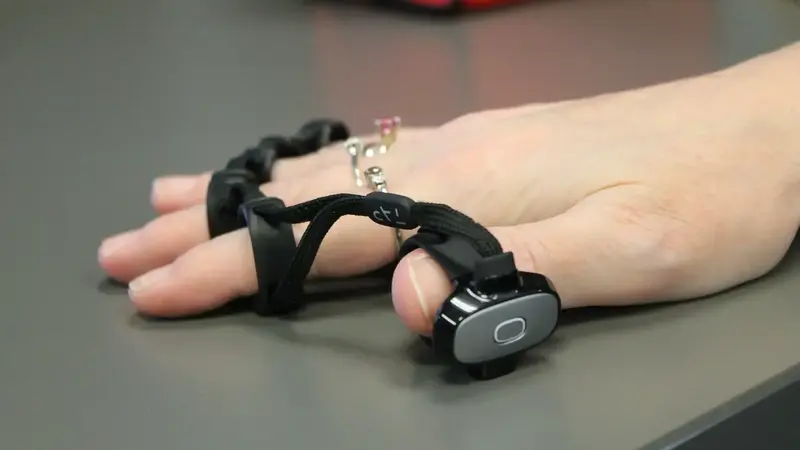
Haptic feedback devices are employed to enhance the user’s immersion in VR by providing realistic tactile sensations, such as vibration or force feedback.
For example, when a user picks up an object or feels resistance while pushing against something in VR, haptic feedback can simulate those sensations through vibrations or force feedback mechanisms incorporated into controllers or gloves worn by users.
Stereoscopic Displays
- The heart of any VR headset lies in its stereoscopic displays – one for each eye – which work together to create a convincing illusion of depth perception known as binocular disparity. By presenting slightly different images to each eye at varying angles based on their position relative to objects within the scene being rendered (parallax), the brain is tricked into perceiving a three-dimensional space.
- The displays in VR headsets typically use either OLED or LCD technology, with higher refresh rates (90Hz or above) being preferred to minimize motion sickness and provide smoother visuals. FOV is key for producing a realistic sensation in VR, with wider FOVs allowing users to feel as if they’re truly inside the virtual world.
Latency Reduction Techniques
A critical aspect of maintaining immersion and reducing motion sickness in VR experiences is minimizing latency – the delay between user input and what’s displayed on the screen.
Various techniques are employed to achieve this, such as asynchronous time warp (ATW), which adjusts images based on updated head-tracking data even if new frames haven’t been rendered yet.
This helps maintain smooth visuals despite any fluctuations in frame rate during gameplay or other interactive scenarios.
What are the Components of a VR Headset?
The basic parts of a VR headset, which combine to create an immersive and interactive user experience, are lenses, displays, sensors, and controllers. These components include lenses, displays, sensors, and controllers.
Let’s take a closer look at each component and its role in providing a seamless VR experience.
Lenses
The lenses in a VR headset serve as the user’s window into the virtual world. They are responsible for magnifying and focusing the images displayed on the screen so that they appear three-dimensional (3D) to our eyes.
High-quality lenses help minimize distortion while ensuring sharp visuals across the entire field of view (source). Some headsets also allow users to adjust lens spacing or focus settings to accommodate different eye distances or prescription glasses.
Displays
Displays within VR headsets provide high-resolution visuals necessary for creating realistic environments and objects with which users can interact.
Most modern headsets use OLED or LCD screens with fast refresh rates (usually 90Hz or higher), reducing motion blur when moving quickly through virtual spaces (source).
Some devices offer adjustable display resolutions depending on user preferences or system requirements.
Sensors
- Gyroscope: A gyroscope measures angular velocity around one axis; it helps detect changes in orientation caused by turning your head left/right/up/down.
- Accelerometer: An accelerometer measures linear acceleration; it helps detect forward/backward and side-to-side head movements.
- Magnetometer: A magnetometer measures the strength and direction of magnetic fields, helping to correct for drift in other sensors by providing a stable reference point (source).
Controllers
Users need input devices such as controllers to interact with objects or navigate through virtual environments.
These can range from simple handheld devices like the Oculus Touch, which tracks hand movements and provide buttons for actions, to more advanced systems like the HTC Vive’s motion-tracked wands that allow users to reach out and manipulate objects directly within their VR space.
Some headsets even offer built-in gesture recognition or support haptic feedback for an enhanced sense of touch during interactions.
In conclusion, for a tailored VR experience, it is essential to comprehend the combination of these elements when selecting a headset.
What are Some Benefits of Using Virtual Reality Headsets?
VR headsets have been gaining traction recently, with users enjoying advantages that go beyond gaming and entertainment. These devices can provide improved learning experiences, enhanced productivity, and even contribute to better physical health outcomes.
Let’s explore some key advantages of using virtual reality headsets.
Improved Learning Experiences
One significant benefit of VR technology is its ability to create immersive educational environments that engage learners more effectively than traditional methods.
For example, students can take virtual field trips to historic sites or experience scientific concepts firsthand without leaving their classrooms.
This hands-on approach enhances understanding and helps students retain information for longer periods.
Enhanced Gaming Experiences
Immersing players in virtual reality, video games on consoles, or computers are revolutionized by creating an engaging experience beyond the traditional.
With a VR headset, players feel like they’re inside the game world – dodging bullets in first-person shooters or exploring vast open-world landscapes – creating a much more engaging experience overall.
Increased Productivity
Virtual reality has been shown to increase productivity levels in various professional settings by allowing employees to collaborate remotely through shared digital workspaces and providing realistic training simulations for high-risk jobs such as firefighting or surgery.
Improved Physical Health Outcomes
Virtual reality can also contribute to better physical health by encouraging users to engage in more active forms of entertainment.
For instance, VR fitness games require players to move their bodies and burn calories while having fun, making it easier for individuals who struggle with traditional exercise routines to stay motivated.
Medical Applications
VR headsets have been suggested to be beneficial in treating various medical issues, such as phobias through exposure therapy and mental health conditions like PTSD by providing immersive experiences that can help reduce stress and encourage mindfulness.
They can help people overcome phobias through exposure therapy or provide relief from symptoms associated with PTSD and other mental health issues by offering immersive experiences that promote relaxation and mindfulness.
What are Some Challenges Faced When Using Virtual Reality Headsets?
While virtual reality headsets offer numerous benefits, users may also face some challenges when using these devices. These issues can range from motion sickness to latency problems and even safety concerns.
Motion Sickness
Motion sickness is a common issue experienced by some VR headset users due to the rapid movements within the virtual environment. This disorientation occurs when the brain receives conflicting information from the eyes and inner ear, causing symptoms such as dizziness, nausea, and headaches.
To minimize this problem, developers have been working on ways to reduce motion sickness through improved hardware design and software optimization.
Latency Issues
Another challenge VR headset users face is latency issues, which cause a lag between user input and what is displayed on the screen.
High latency can lead to an unresponsive or jittery experience that breaks immersion in the virtual world. Companies developing VR technology constantly strive for lower latency times to provide smoother experiences for their users.
Safety Concerns
- Eye Strain: Prolonged use of VR headsets may cause eye strain due to focusing on close-up screens for extended periods of time. Taking regular breaks while using a headset can help alleviate this issue.
- Neck Pain: Wearing heavy VR headsets for long periods can lead to neck pain and discomfort. Headsets should be chosen with care, ensuring they possess a design which is ergonomic and distributes weight in an even manner.
- Physical Hazards: While immersed in a virtual environment, users may become unaware of their surroundings, leading to potential accidents or injuries. It is essential for users to set up a safe play area before engaging in VR experiences.
In order to maximize the benefits of virtual reality technology and minimize potential issues, users and developers must take necessary precautions while staying informed about advancements in VR hardware and software.
By taking necessary precautions and staying informed about advancements in VR hardware and software, individuals can minimize potential issues while maximizing their immersive experiences.
How does a virtual reality headset work?
A virtual reality headset works by displaying stereoscopic 3D images, creating an immersive environment for the user. It uses head-tracking technology to adjust the image based on the user’s movements and may include handheld controllers or hand-tracking systems for interaction within the virtual world.
Additionally, VR headsets often feature stereo sound to enhance the overall experience.
What makes virtual reality work?
Virtual reality works through a combination of hardware and software components that create an interactive, immersive experience.
Key elements include high-resolution displays with wide field-of-view lenses, accurate head-tracking sensors, powerful processors for rendering graphics in real time, and well-designed content that responds to user input.
These components work together seamlessly to transport users into convincing digital environments.
FAQ
- What is virtual reality (VR)?
- Virtual reality is a computer-generated, three-dimensional universe experienced through special electronic devices like headsets or gloves fitted with sensors. It immerses individuals in virtual environments, providing a realistic and interactive experience.
- How does virtual reality work?
- Virtual reality works by combining hardware and software components to create an immersive and interactive experience. This includes high-resolution displays, head-tracking sensors, powerful processors for real-time graphics rendering, and well-designed content that responds to user input.
- What are the types of virtual reality systems?
- There are three main types of virtual reality systems: non-immersive simulations, semi-immersive simulations, and fully immersive simulations. Non-immersive simulations involve interacting with a 3D environment on a computer screen, semi-immersive simulations utilize large screens or multiple monitors, and fully immersive VR systems use advanced technology like headsets, motion tracking, and haptic feedback for a realistic experience.
- What are the benefits of using virtual reality headsets?
- Virtual reality headsets offer various benefits beyond gaming and entertainment. They can provide improved learning experiences, enhance productivity in professional settings, contribute to better physical health outcomes, and have potential medical applications in treating certain conditions like phobias and mental health issues.
- What challenges are associated with using virtual reality headsets?
- Users may face challenges when using virtual reality headsets, include motion sickness due to rapid movements in the virtual environment, latency issues causing lag between user input and display, and safety concerns such as eye strain, neck pain, and potential physical hazards. However, developers are constantly working on minimizing these challenges through hardware improvements and software optimization.
Final Thoughts
VR headsets have transformed the manner in which we engage with digital content. In this article, we will learn how virtual reality works and how it can be interacted with using specialized equipment such as VR headsets. We will also explore the components of VR headsets and some benefits and challenges associated with their use.
Virtual reality is a computer-generated simulation of a three-dimensional environment that can be interacted with using specialized equipment such as VR headsets. These headsets use a combination of sensors, lenses, and displays to create an immersive experience for the user. The sensors track the user’s movements and adjust the display accordingly, while the lenses and displays work together to create a 3D image that appears to be in front of the user’s eyes.
One of the benefits of virtual reality is that it allows users to experience things that would be difficult or impossible to experience in real life. For example, virtual reality can be used to simulate dangerous or inaccessible environments, such as outer space or the deep sea. It can also be used for educational purposes, such as allowing students to explore historical sites or scientific concepts in a more interactive way.
However, there are also some challenges associated with virtual reality. One of the main challenges is the potential for motion sickness, which can occur when the user’s movements in the virtual environment do not match their movements in the real world. Another challenge is the cost of the equipment, which can be prohibitively expensive for some users.
In conclusion, understanding how virtual reality headsets work is essential for gamers, explorers, or anyone interested in experiencing immersive digital content. As technology advances, it’s exciting to think about what new possibilities will emerge in the virtual reality world.
If you’re looking to learn more about virtual reality or need help developing your own VR project, contact Pursuit Meta today!

Espen
Espen is the Director of PursuitMeta and has written extensively about Virtual Reality and VR Headsets for years. He is a consumer product expert and has personally tested VR Headsets for the last decade.

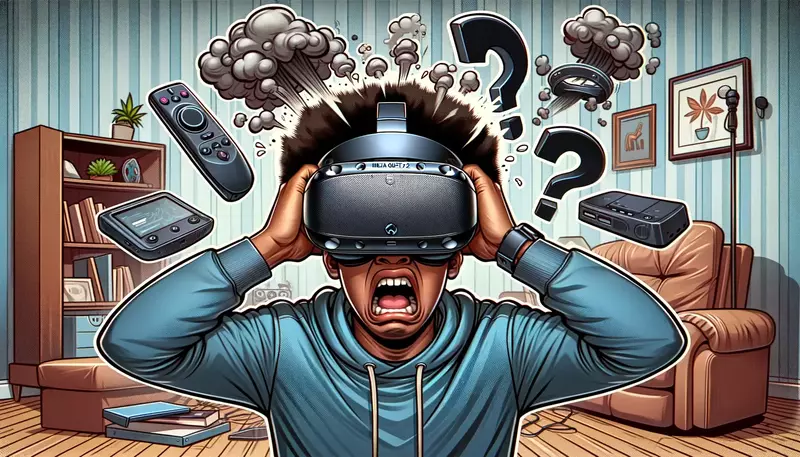
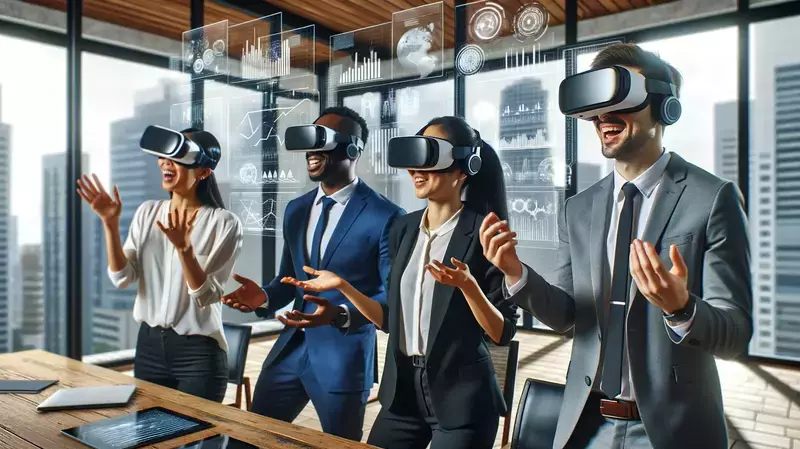
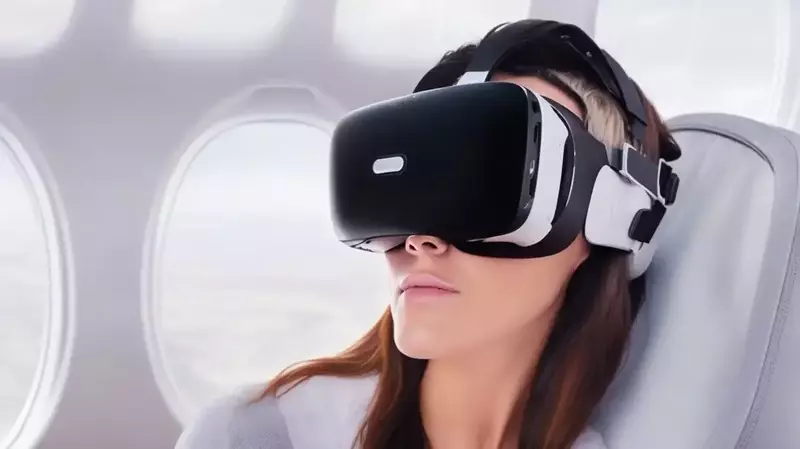
Leave a Reply